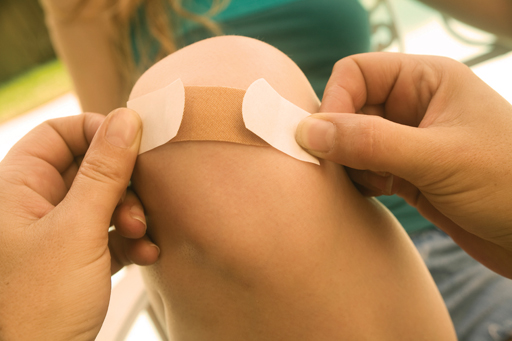Dressing choice depends on the level of exudate, but a dressing should also be comfortable and flexible. Dressings can be waterproof, while incorporating an absorbent pad and a semi-porous/breathable film to stop the skin around the wound from macerating.4
Hydrogels have a high water content, are cohesive (they adhere of their own accord), and can help with the debridement process. Hydrocellular dressings are absorbent and waterproof but breathable and are suitable for a lower degree of exudation. Alginates are highly absorbent, so are suitable for wounds that are exuding heavily. Hydrocolloids are similarly absorbent and can be used in an occlusive or non-permeable dressing.2,3

Later in the healing process, at the epithelialisation stage in deeper wounds, it may be appropriate to use a tulle gras – a paraffin-impregnated loose mesh – to provide protection but not so as to remove healthy new tissue when changing the dressing.3
Backing materials can range from cloth fabrics through to synthetic films. A woven fabric dressing can be fairly robust, stretching along the directions of the weave. A film-based plaster can be transparent and therefore less conspicuous, as well as thinner.4
For wounds that are likely to take longer to heal, such as partial thickness or second-degree burns, it may be better to minimise disturbance to the healing process by having a dressing that can be left in place for up to 10 days or more. However, an injury of this nature is perhaps something that should be monitored by nursing staff.5
Another important factor in selecting a dressing is to use one that is the right size. A dressing that is too big or too small can impair the healing process. This can mean physically measuring the size of the wound, rather than estimating it.2
